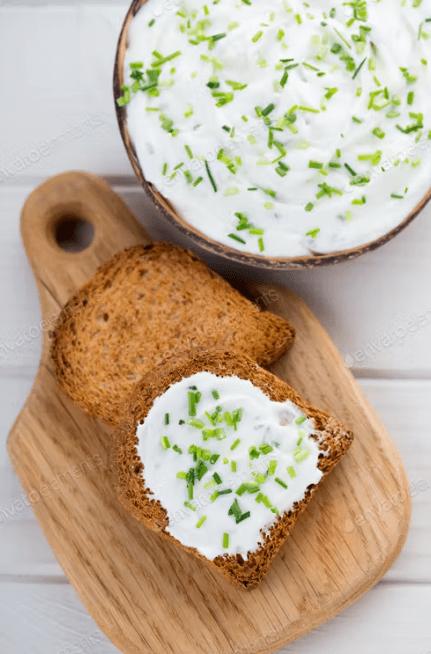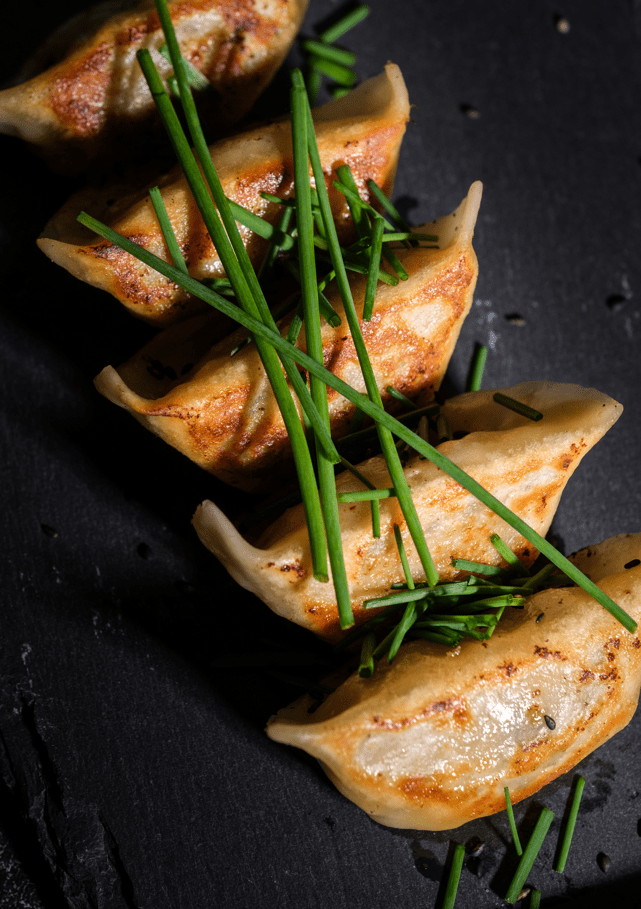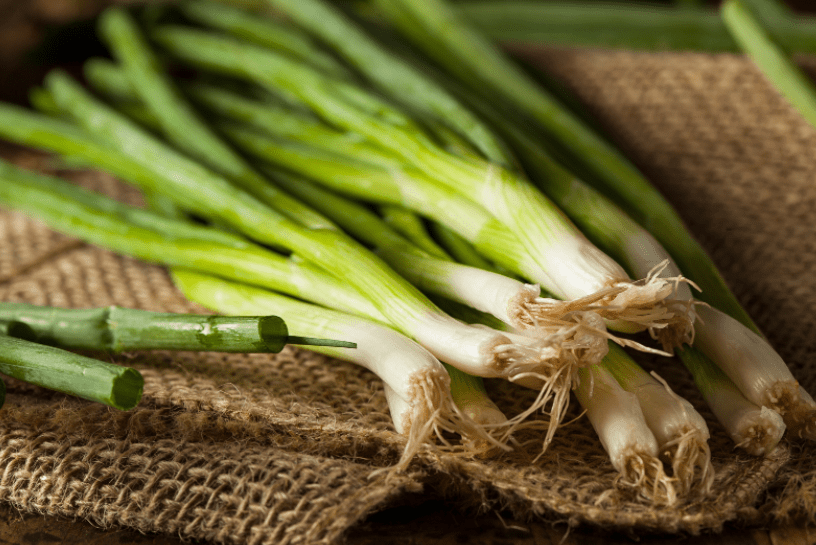Amazing Green Onion
Green onions are sometimes called scallions, but although they taste similar and can be used interchangeably, they are specific representatives of the onion family.
Scallions, also called spring onions, are a variety of white onion that does not form enlarged bulbs and can be identified by their straight sides at the root end.
Green onions are immature regular onions picked with their green tops still attached and when their bulbs are almost non-existent or somewhat developed.
You’ll find green onions in the supermarket; spring onions are often for sale at farmers’ markets.
Both green onions and scallions can be chopped and added raw to salads, sandwich fillings, rice and noodle dishes, and much more.
Add them to stir-fries and soups near the end of cooking, or they will go dark and limp and lose their eye-appealing color and texture.
Choose green onions and scallions with rich green, almost crisp tops and firm, white and fresh-looking root ends. Store as you would leeks and wash well before using.
Green Onion Cake With Lemon Dipping Sauce

Green onion cakes served at Chinese restaurants are sometimes a little greasy. But grilling them uses less oil and gives them a pleasant flavor.
- 1 cup (250 mL) hoisin sauce
- zest of 2 lemons
- 1/4 cup (50 mL) lemon juice
Combine in a bowl all the ingredients and set aside.
Onion Cakes:
- 2 1/2 cups (625 mL) all-purpose flour
- 1/2 cup (125 mL) wheat starch
- 1 cup (250 mL) hot water
- 1 1/2 cups (375 mL) thinly sliced green onions
- 1/2 cup (125 mL) coarsely chopped coriander leaves
- 1/2 cup (125 mL) finely chopped garlic chives
- 3 tbsp (45 mL) sesame oil
- 1/4 cup (50 mL) sesame seeds
- 1 1/2 tbsp (22 mL) salt
How To Prepare
Combine the flour and wheat starch in the bowl of a mixer fitted with a dough hook. With the machine running, add the water. Process the mix until it makes a ball.
If it is sticky, add more flour. Turn the ball out onto a floured surface and knead by hand for a minute to develop the gluten. Let the dough rest for about 15 minutes.
Combine in a bowl the onions, coriander leaves, and garlic chives.
Develop the dough into a log shape about 1-foot (30 cm) long and cut it into eight pieces. Form each part into a ball. Flatten each ball into a 7-inch (18 cm) round with a rolling pin. Lay the rounds out on your work surface.
Brush each round with the sesame oil, sprinkle with sesame seeds and salt, and divide the green onion mixture among them. Roll the dough up like a gelatin roll and press down the ends of the roll to seal them.
Take one end of the roll and wind it around the other to end up with a coil. Tuck the loose end under and flatten the coil slightly with the palm of your hand.
Flatten the coils into 7-inch (18 cm) circles with a rolling pin. The green onions may pop out here and there, but don’t worry, continue to roll them.
You can cook the cakes or pile them up, separated by plastic wrap, and freeze them. They are great to pull out of the freezer and fire onto the grill or into a pan for a quick snack.
To cook them, preheat your barbecue grill to medium heat. Brush the cakes with oil and lay them on the grill. When the top surface looks a little translucent and the edges look white, about 4 minutes, flip the cakes over and cook for two more minutes.
Remove from the grill and cut into wedges. Serve with the lemon dipping sauce.
Note: Wheat starch is precisely the starch component of wheat flour. It is used for making many types of Chinese dumplings and can be found in Chinese grocery stores and health food stores.
Chives
This slender, vivid green member of the onion family is classified as an herb. When harvesting from your garden, they should be cut just above the ground, not pulled out as you would a green onion or leek.
If you don’t have a garden, you can buy chives at the supermarket or at a farmers’ market.
Choose uniformly green ones that look fresh-picked. Store as described for leeks above.
Chives add flavor to salads and salad dressings; egg dishes; baked, pan-fried, or mashed potatoes; flavored butter, mayonnaise, or hollandaise sauce; and stews, soups, and stir-fries.
Chives‘ edible, lavender-colored flowers, whole or chopped, can also add a colorful and somewhat intense addition to salads, pasta, and fish dishes.
Garlic chives, sometimes called Chinese, are pretty long and have flat, broad stems. They have a garlicky flavor and a firmer texture than regular chives.
Chop and use in Asian-style dishes, such as fried rice, noodle dishes, or stir-fries. Or add to soups and stews near the end of cooking.
If you have a garden full of fresh chives, chop or snip and place in an individual layer on a parchment-lined baking plate and freeze solid. Transfer to an airtight container and keep frozen until needed. Sprinkle, while still frozen, into any dish you think will benefit from the taste of chives.
Pork Aand Chive Gyoza

These savory, Japanese-style dumplings are great for snacking on.
Preparation time: 25 minutes
Cooking time: About 6 to 7 minutes
Makes: About 24 to 30 gyoza
For the dipping sauce:
- 1/4 cup (50 mL) soy sauce
- 1/4 cup (50 mL) rice vinegar
- 1 teaspoon (5 mL) chopped fresh ginger
- 2 teaspoons (10 mL) sugar, or to taste
- 1 tablespoon (15 mL) chopped fresh chives
- 1/4 teaspoon (1 mL) Asian-style hot chili sauce
‘
For the dumplings:
- 10 ounces (300 g) of ground pork
- 3 tablespoons (45 mL) of chopped fresh chives
- 2 teaspoons (10 mL) chopped fresh ginger
- 1 tablespoon (15 mL) soy sauce
- 1/4 teaspoon (1 mL) ground black pepper
- 2 teaspoons (10 mL) sugar
- 2 teaspoons (10 mL) sesame oil
- 2 teaspoons (10 mL) cornstarch
- Vegetable oil
- 24 to 30 round dumpling wrappers
Preparation
- Blend the relish ingredients in a dish and keep them in the fridge until the dumplings are ready.
- In a bowl, combine the filling ingredients, except the oil and wrappers.
- Place a few dumpling wrappers on a work surface.
- Brush the edges lightly with cold water.
- Place 2 teaspoons (10 mL) of filling in the center of each wrapper.
- Fold in half and press the edges together to seal.
- Set the gyoza on a non-stick or parchment-lined tray, ensuring that they do not touch.
- Repeat with the remaining filling and wrappers.
- Warm-up 1 tablespoon of vegetable oil in a wide, non-stick skillet set over medium heat.
- When hot, set in the gyoza.
- Cook, depending on the size of the pan, 12 to 15 at a time.
- (Keep warm in a 200 F oven, or eat the first batch and then make the next).
- Lightly brown on one side and then turn over and cook for 1 to 2 minutes more.
- Pour in a 1/4 cup (50 mL) of cold water; cover and cook until the gyoza are cooked through, and the water has almost entirely evaporated.
- Place the gyoza on a serving tray with the sauce alongside for dipping.

























